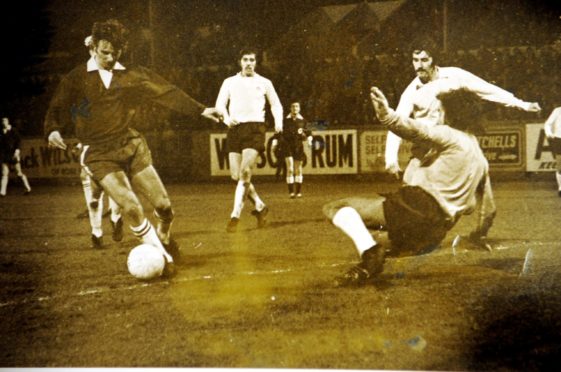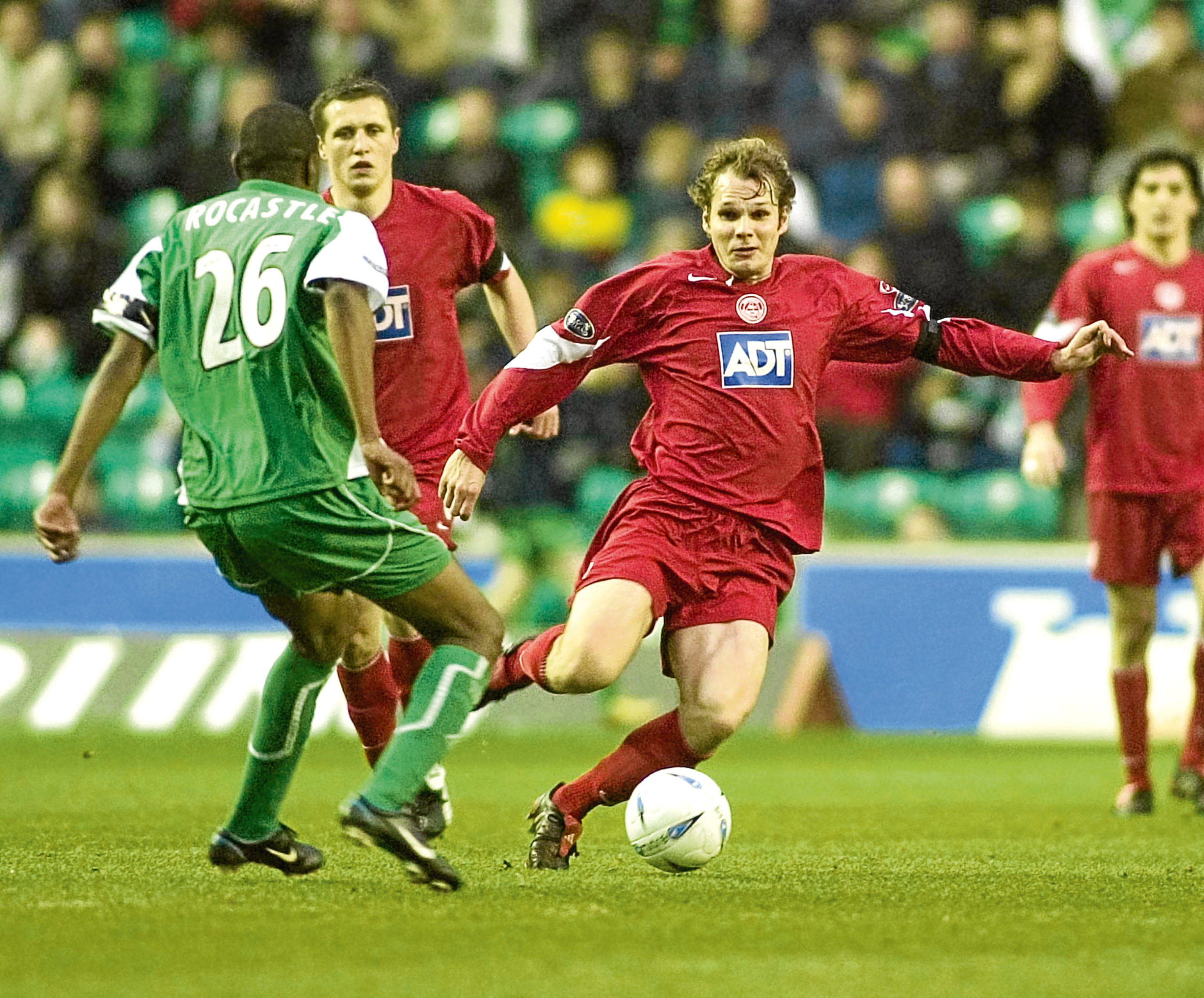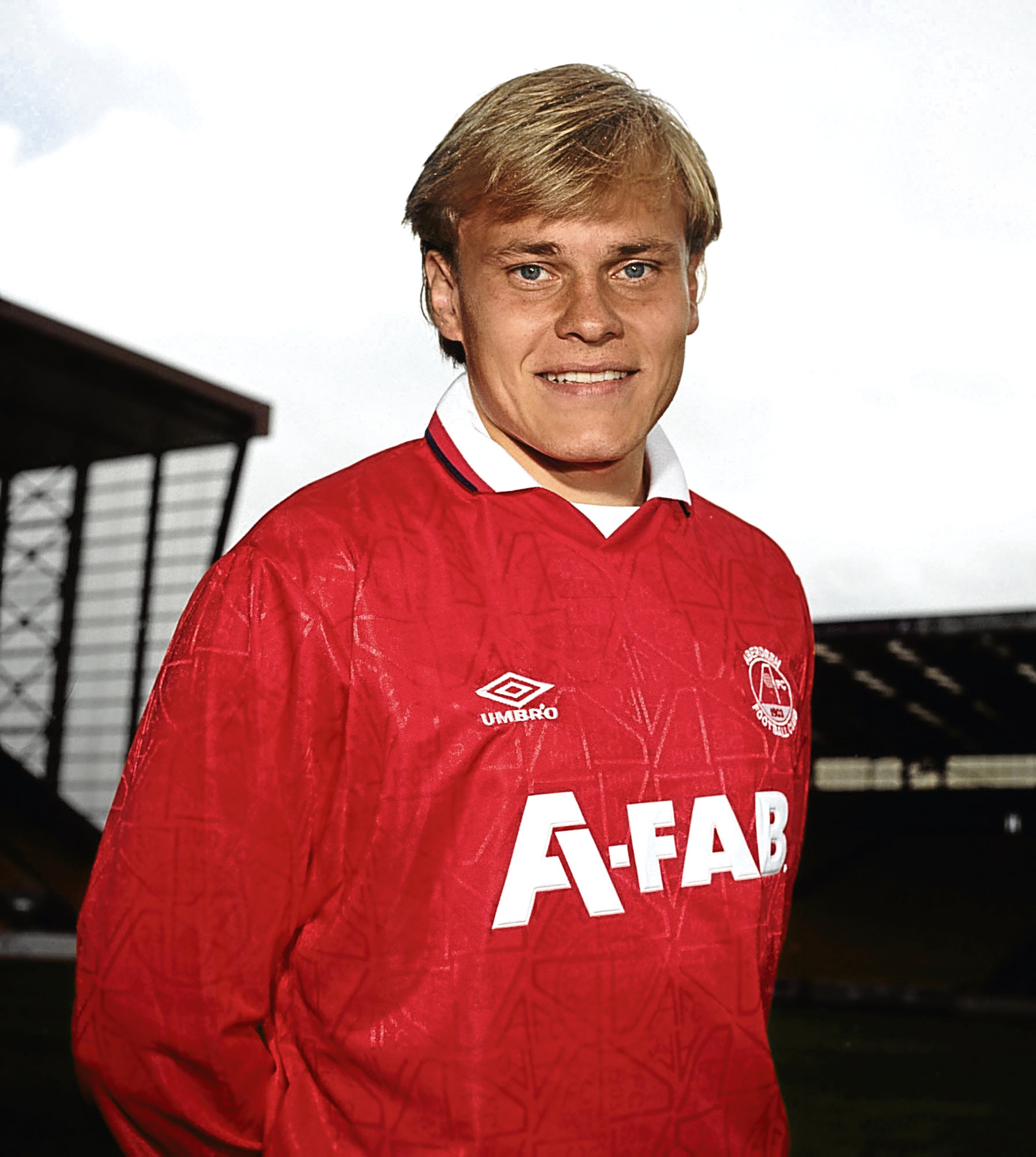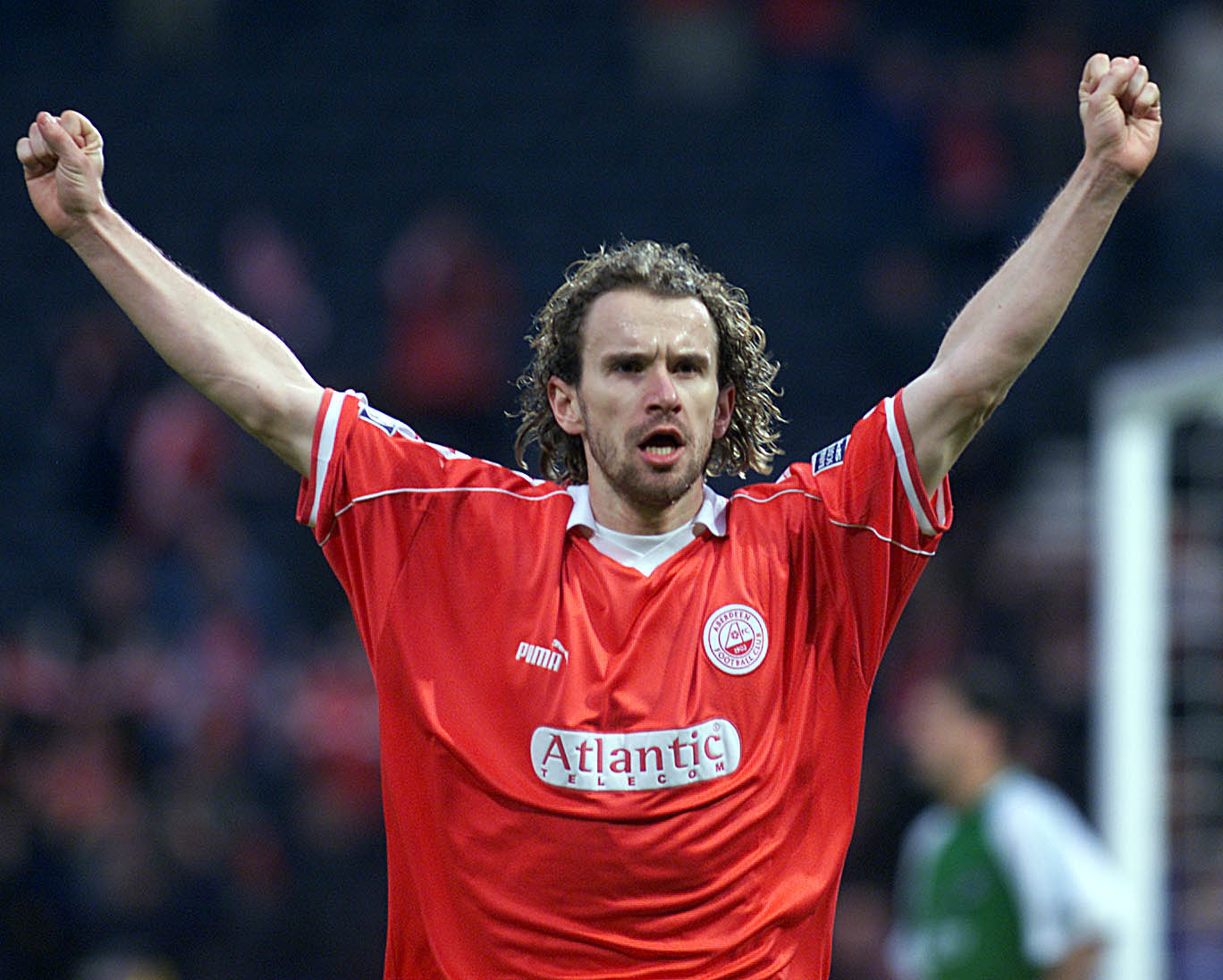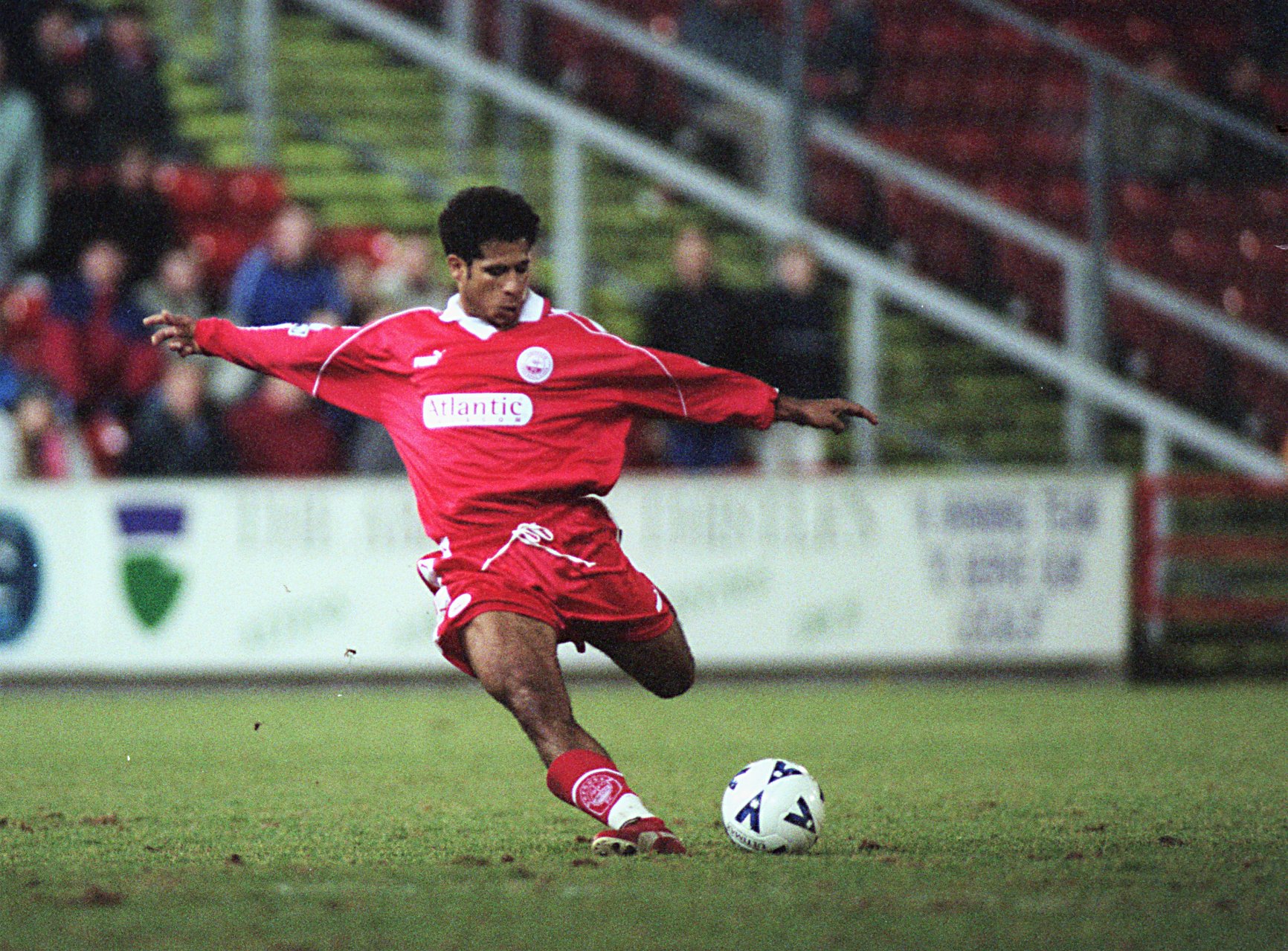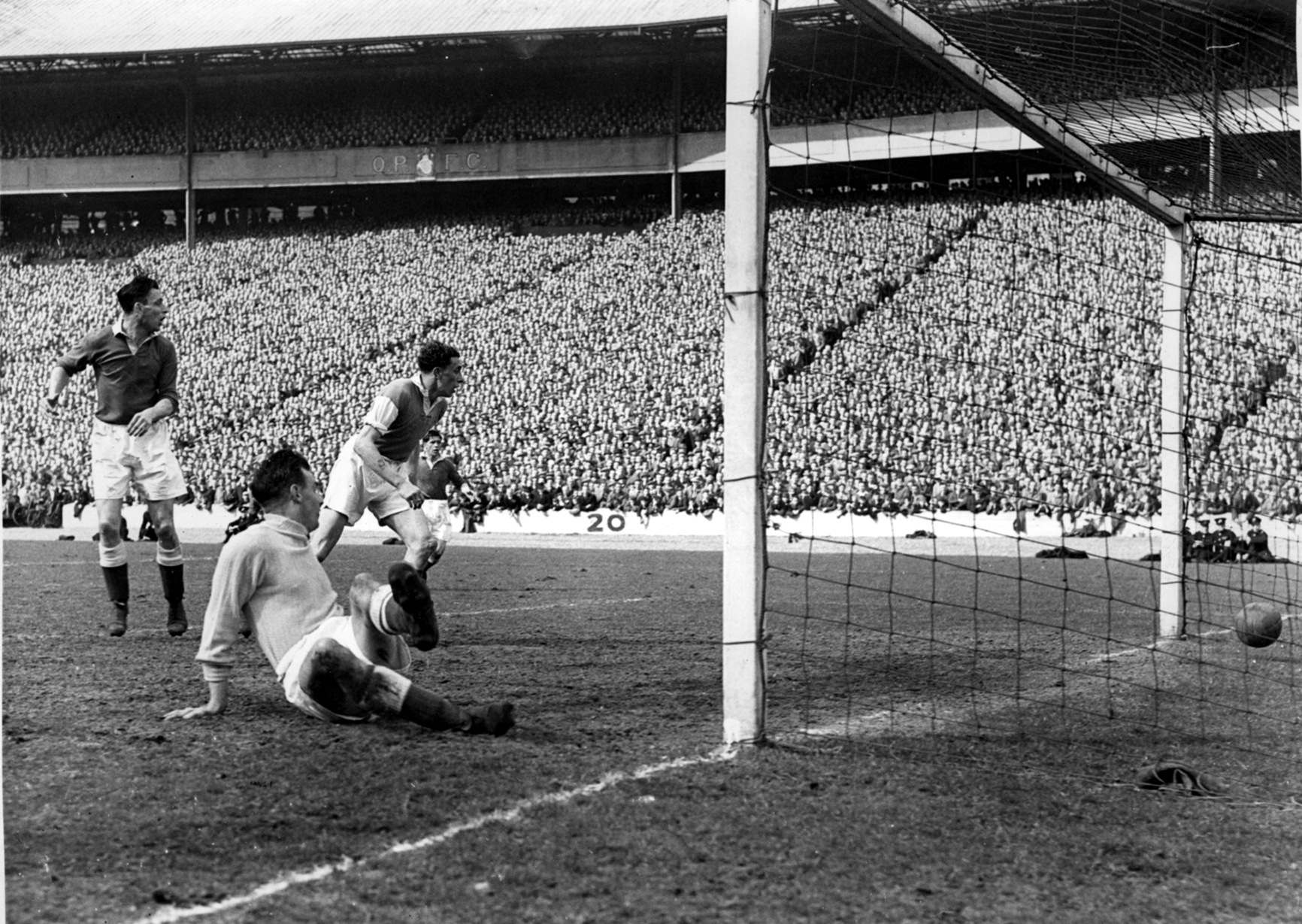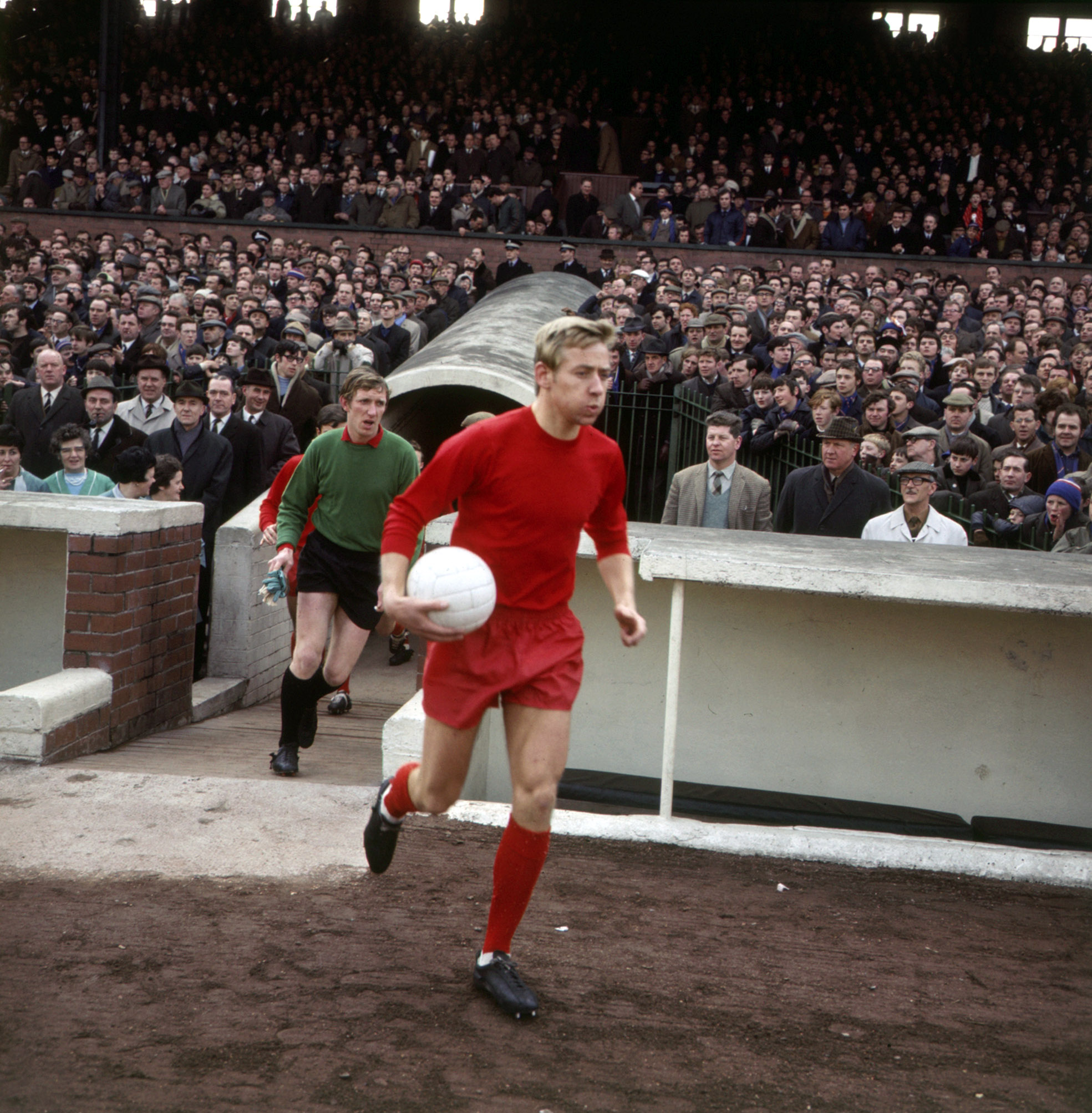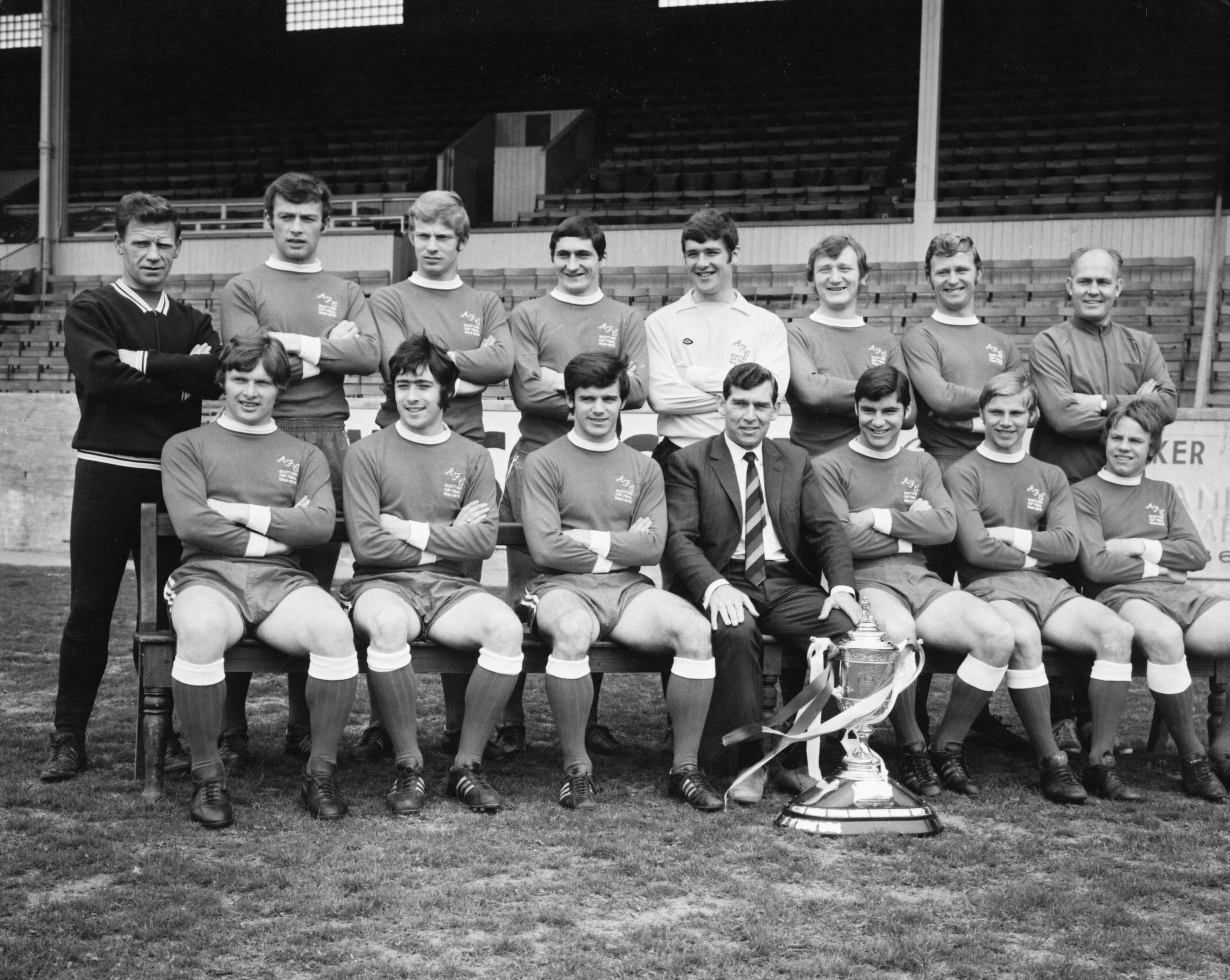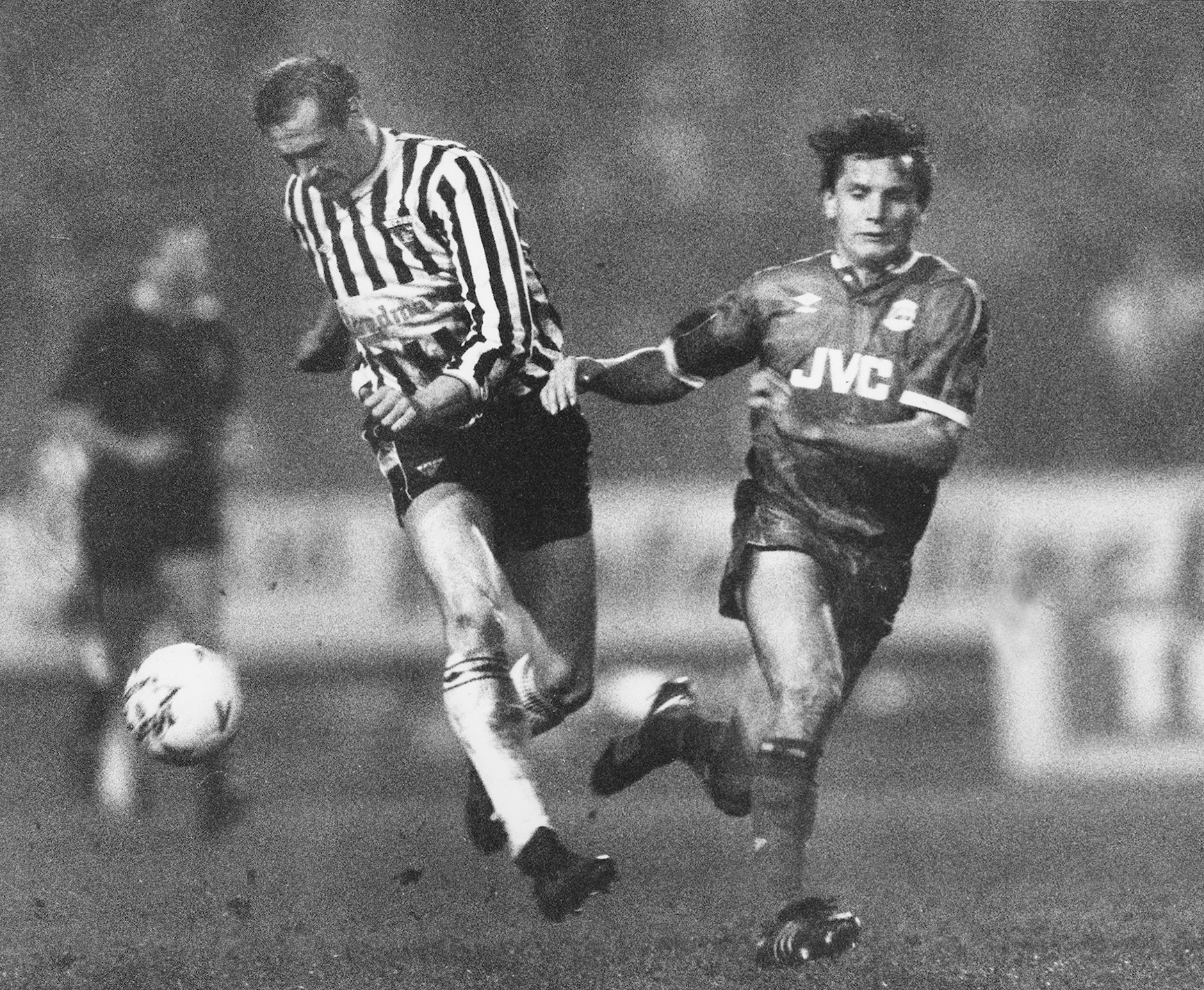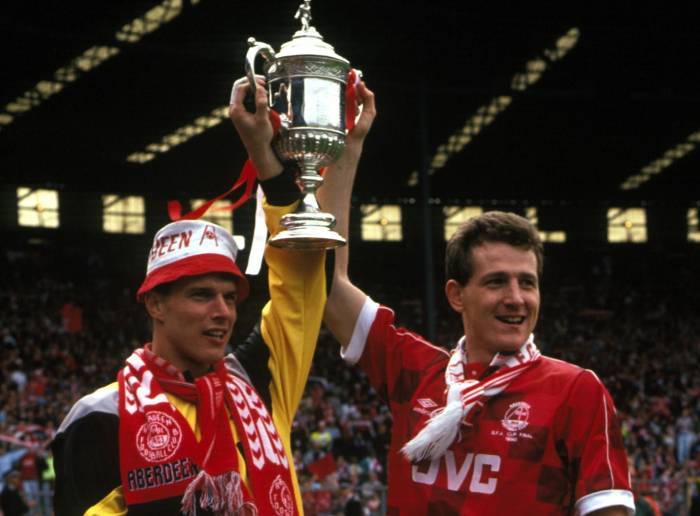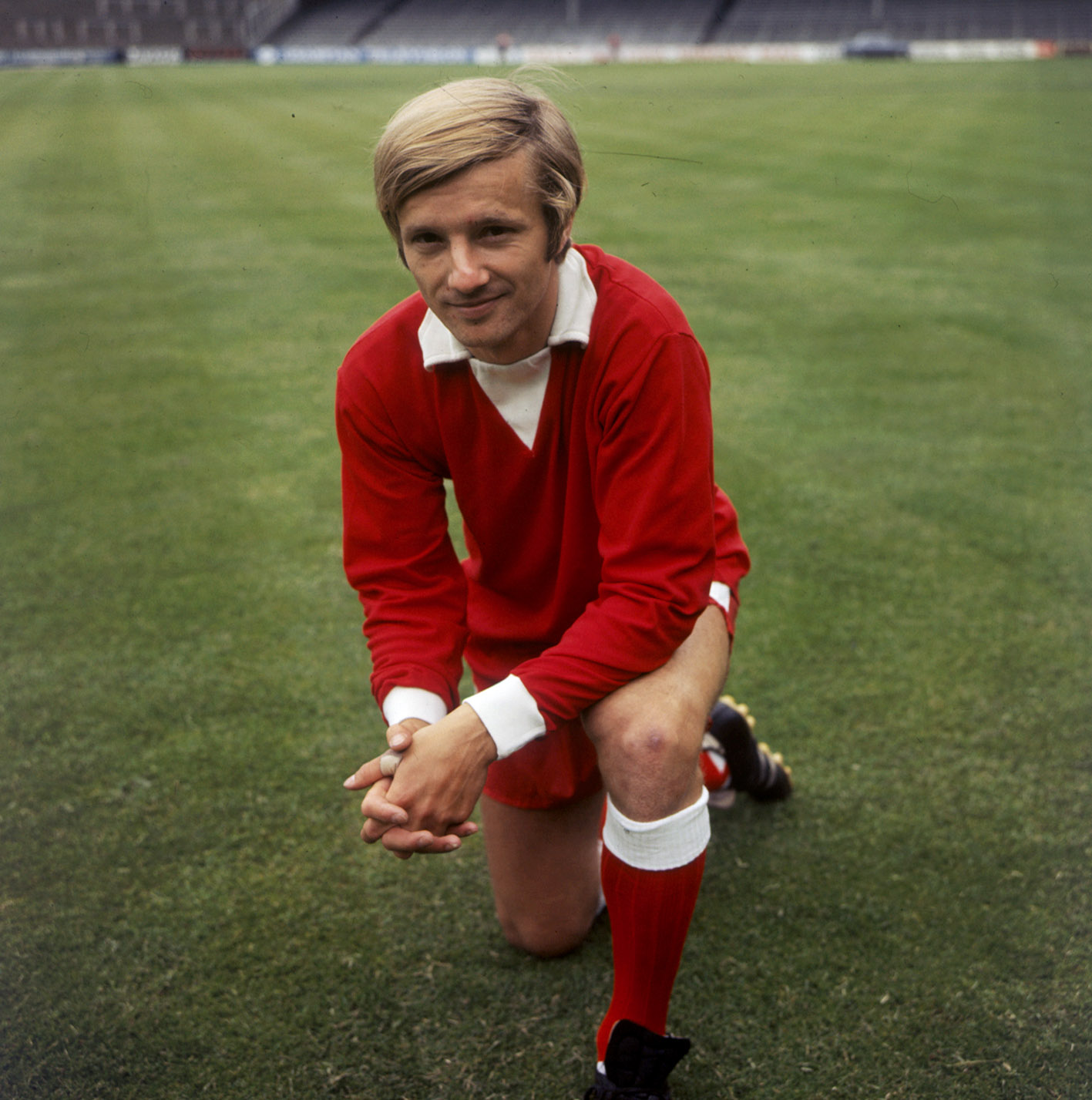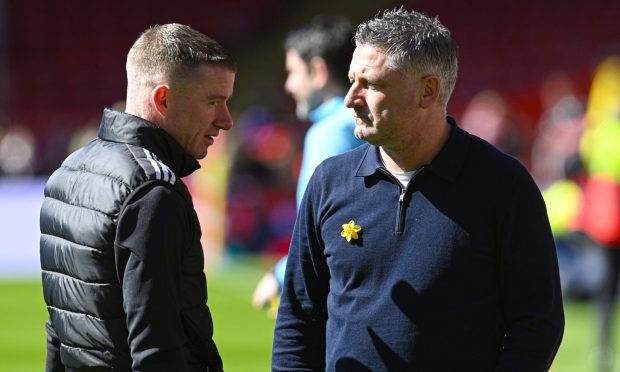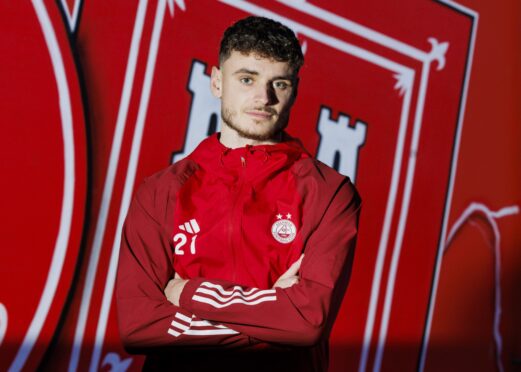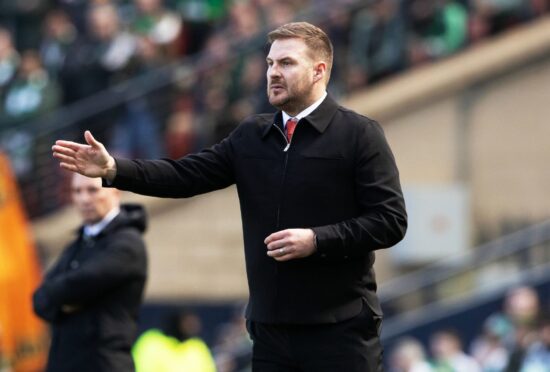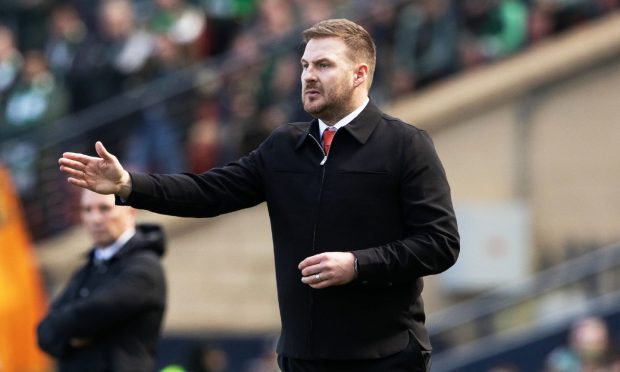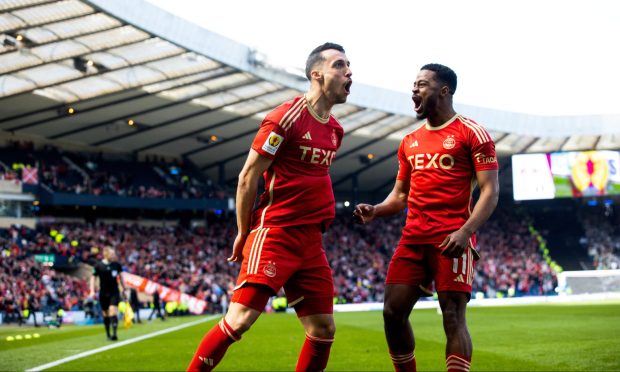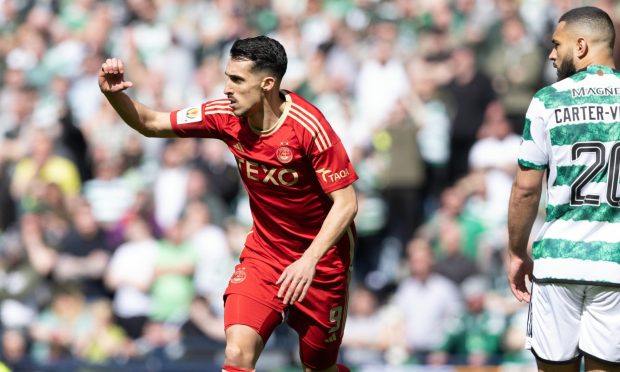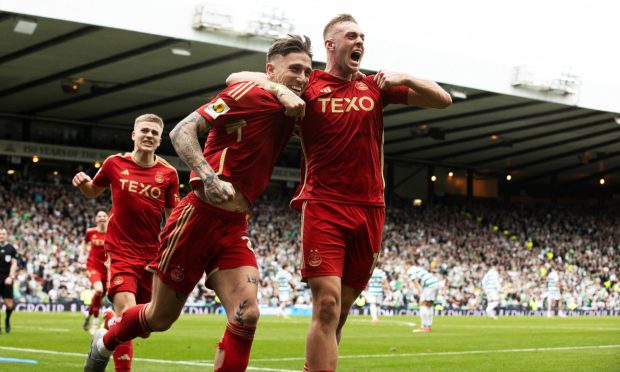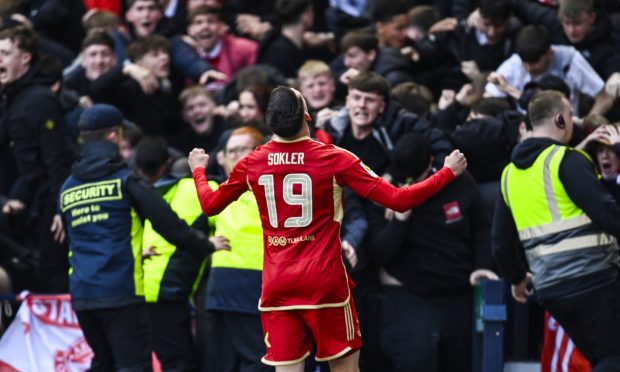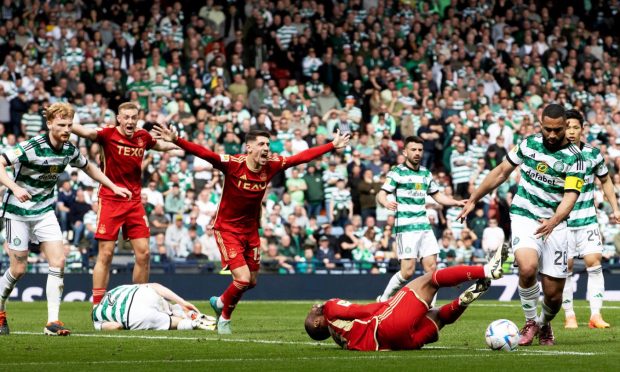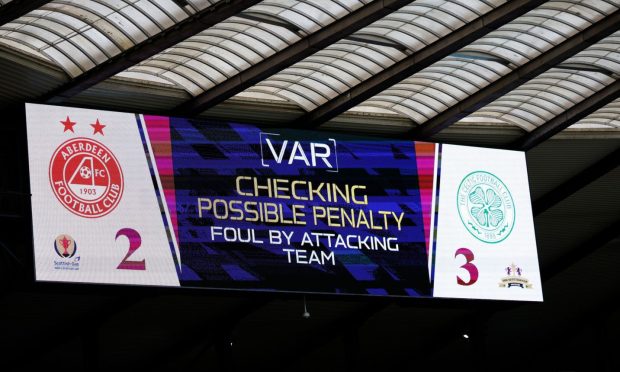Until this season – now on hold indefinitely – Derek McInnes and his staff’s success during his seven years at Aberdeen had been built on British and Irish players.
Why change a formula which brought the club it’s most consistent period in the league since the halcyon Eighties days under Alex Ferguson, with McInnes’ Dons Premiership runners-up for four seasons in a row until finishing fourth last term?
It’s really taken until this season, with Belgian midfielder Funso Ojo, for a foreign international to become a key part of the starting 11 at Pittodrie. Despite a freak double hamstring tear at the end of 2019, Ojo has made 16 league starts in his fledgling Dons career.
Ojo has crucially won over the majority of Aberdeen fans, too, with his combative, but technically-sound style, in a way the only other two imports to make a dent in terms of appearances under McInnes – Calvin Zola, of the Democratic Republic of Congo, and aged, returning Icelander Kari Arnason – did not necessarily achieve.
Striker Zola was a touch clumsy and didn’t have the necessarily goal return, while veteran Arnason – who had been a hit as a midfielder in his first spell – was exposed badly in defence in a 3-0 Scottish Cup semi-final loss to Motherwell, something which tainted his contribution during the 2017/18 season.
However, over the club’s 117-year history, there are some foreign nationals who stack up against the greatest players to wear the red of Aberdeen.
Here are the 10 foreign imports we think were the best for Aberdeen:
10. Markus Heikkinen
Ex-midfielder Heikkinen was a popular figure during his two-season Pittodrie stint in the early 2000s, where he played as a stylish midfield anchor under Steve Paterson and Jimmy Calderwood, making 80 appearances between 2003 and 2005.
A 60-plus-capped Finnish international by the end of his career, which included plenty of European action at Rapid Vienna, Heikkinen is now coaching at hometown club AC Oulu – as he told Society Aberdeen last year.
9. Mixu Paatelainen
Another Finn, striker Paatelainen scored 28 goals in 93 games for Aberdeen between 1992 and 1994, with 20 in 43 during his first full season under Willie Miller – a campaign where Duncan Shearer bagged 28 goals.
The stocky target man, who held the ball up well, he lost a League Cup and Scottish Cup final while at the Dons before leaving for Bolton Wanderers.
Since his Dons exit, he’s returned to Scotland often – as a player and a manager, and currently bosses Hong Kong’s national team.
8. Arild Stavrum
While Paatelainen was valuable in a strong Reds side which finished second in the league and got to two cup finals, Norwegian Stavrum scored plenty of goals in 1999/00 and 2000/01, despite the side finishing 10th and seventh under Ebbe Skovdahl.
Stavrum’s record of 29 goals in 67 games was a great return all things considered.
He left for far less than he was worth in 2001 because of a clause in his contract.
Since retiring, Stavrum has turned his hand to football-crime fiction and also features in this interesting anthem composed by fitbathatba in 2015:
7. Hicham Zerouali
Moroccan midfielder “Zero” only made 23 starts in his three seasons at Pittodrie – between 1999 and 2002 – which says a lot about the level of impact he was able to make in his short time on the field.
He netted 13 goals in 48 appearances. Among them were two sensational goals at Rugby Park in consecutive campaigns, one flicked in, the other skelped in via the crossbar. The long-range howitzer was a trademark.
Similar to two of the players further down this list, with Zerouali, it was his flair which resonated.
Zerouali died in a car accident in his native Morrocco aged 27 in 2004.
6. Stan Williams
Cape Town-born inside right Williams scored 51 goals in 127 appearances for Aberdeen in an 11-year period which spanned World War Two.
He sailed to the Granite City after the Reds spotted him on a tour of South Africa and was an important part of the side when peace returned to Europe.
Williams secured his place in the club’s history when he scored a 42nd-minute winner which secured Aberdeen’s first ever Scottish Cup in 1947, while Dave Halliday was in charge.
Williams died in 2007.
5. Jens Petersen
Dane Petersen played 202 times for Aberdeen from January 1965 onwards, leaving midway through 1970.
Under Eddie Turnbull, he developed into the Dons’ formidable right half and skipper, before being displaced by the young Martin Buchan.
Petersen was the only non-Scot to feature in the 1967 Scottish Cup final, which Turnbull’s Dons lost 2-0 to Celtic’s five-trophy-winning Lisbon Lions.
He died, aged 70, in 2012.
4. Henning Boel
Danish right-back Boel made 150 appearances for the Dons across six seasons, following Petersen’s lead.
In the 1968/69 campaign he was part of the “Washington Whips” Dons team which reached the final of the American Soccer League tournament, before winning the Scottish Cup under Eddie Turnbull in 1970, when Aberdeen beat Celtic 3-1 at Hampden.
Boel’s career was cut short by injury at 27.
3. Hans Gillhaus
Holland international Gillhaus arguably had the best debut of any Aberdeen player ever, with the striker scoring an overhead kick away to Dunfermline and then adding a second with his head to announce himself to the Red Army.
Gillhaus arrived at Pittodrie for £650,000 in 1989, having already played in a European Cup final for PSV Eindhoven. It was a 1989/90 campaign where the Dons won the League Cup and the Scottish Cup under Alex Smith.
On his home debut, he sealed a win over Rangers, and ultimately went on to make 100 Reds appearances, scoring his penalty shoot-out effort in the national trophy showpiece victory against Celtic.
His drawn-out departure for Dutch outfit Vitesse Arnheim in 1993 for half the fee he’d arrived for ended his Aberdeen career in a less-than-ideal fashion.
2. Theo Snelders
Netherlands-born goalkeeper Snelders cost Alex Smith and Aberdeen £300,000 when he arrived from FC Twente to replace Jim Leighton.
A phenomenal keeper, he made 290 Dons appearances and, in tribute to his performances, was also taken to the Italia 90 World Cup by Holland.
His most important moment in red came in the 1990 Scottish Cup final, with Aberdeen having already lifted the League Cup, when he dived low to his left to save from Anton Rogan in the penalty shoot-out. This allowed Brian Irvine to score his spot-kick and secure the double.
Snelders was sold to Rangers in 1996, after he fell out of favour with Roy Aitken.
1. Zoltan Varga
Teddy Scott – the legendary Aberdeen club-man of nearly 50 years – rated Varga as the Dons’ greatest import, which to quote one of the Evening Express and Press and Journal sports writers: “Should be good enough for us.”
Hungarian Varga, signed from Hertha Berlin for £40,000 in 1972, and stayed for one season, making 31 appearances.
A technician with the ball, ahead of his time, he received some rough treatment in Scotland. He eventually moved to Ajax in 1973, to fill the void left by Dutch icon Johan Cruyff.
Varga died in 2010, aged 65.
